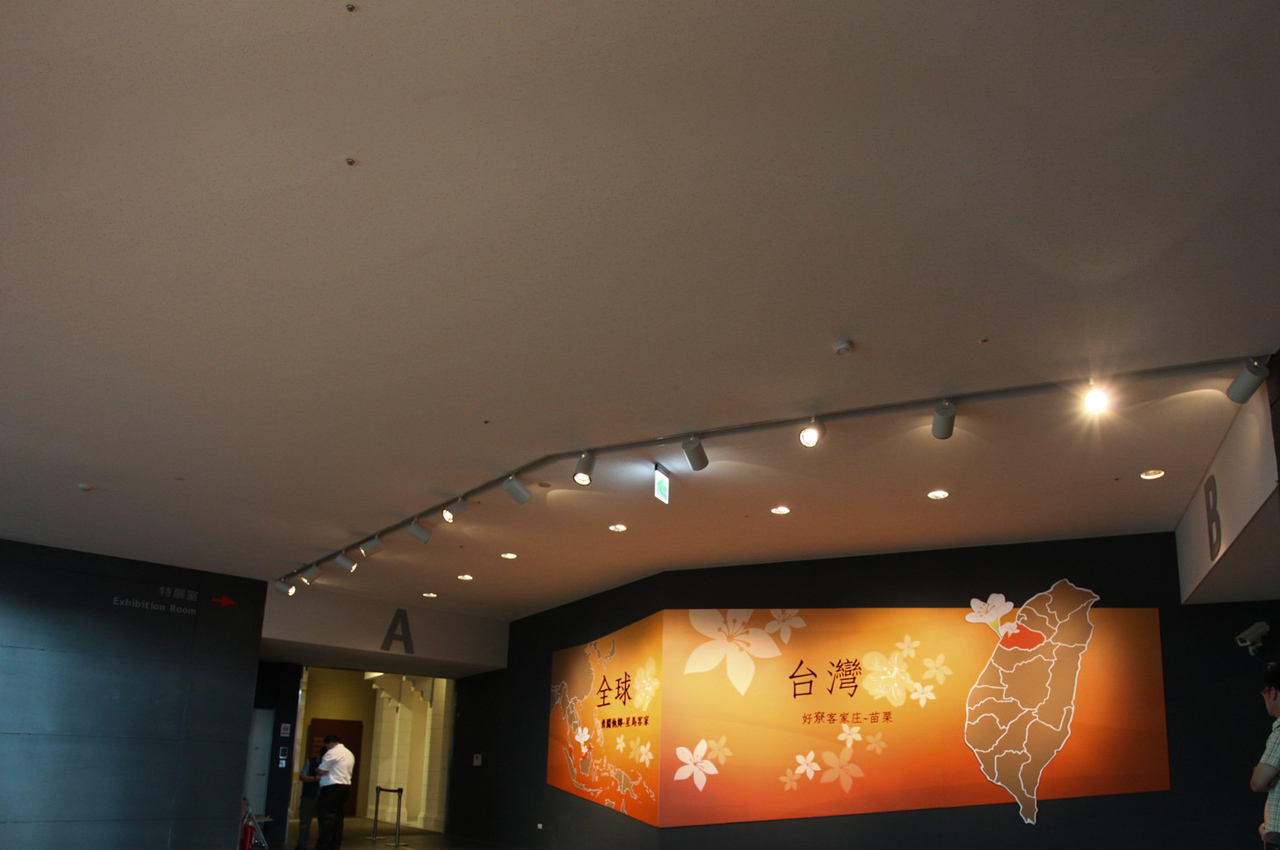Natural Grassland Area
Natural Grassland Area
Natural Grassland Area
Natural Grassland Area is the richest treasure for Hakka people in Liudui, and it also symbolizes the start of Liudui. The diverse ecological environments nurtured by Ahou Forest supplied to the Hakka ancestors in Liudui all kinds of daily-life needs, including food, clothing, construction materials, and/or entertainment. The utilization of native plants from Ahou Forest shows us what a simple life our Hakka ancestors led and how smart they were in crafting the natural resources, particularly in those poor days in need of all kinds of material things.
To reproduce the rich native flora, the Park management unit has planted a variety of trees along the biking trails around the park, set up an ecological pond in the center of the Park, and planted a variety of aquatic plants along the boardwalk around the lake. It is hoped that visitors can enjoy seeing different landscape according to the changes of four seasons. Makino Bamboo trees are planted in the bamboo square where a bamboo gazebo is also constructed facing the lake. It is hoped that visitors can enjoying watching the reflection of landscapes in the lake while resting under the gentle caress of cool breeze. All in all, we hope to fully demonstrate the original natural vitality of the land.
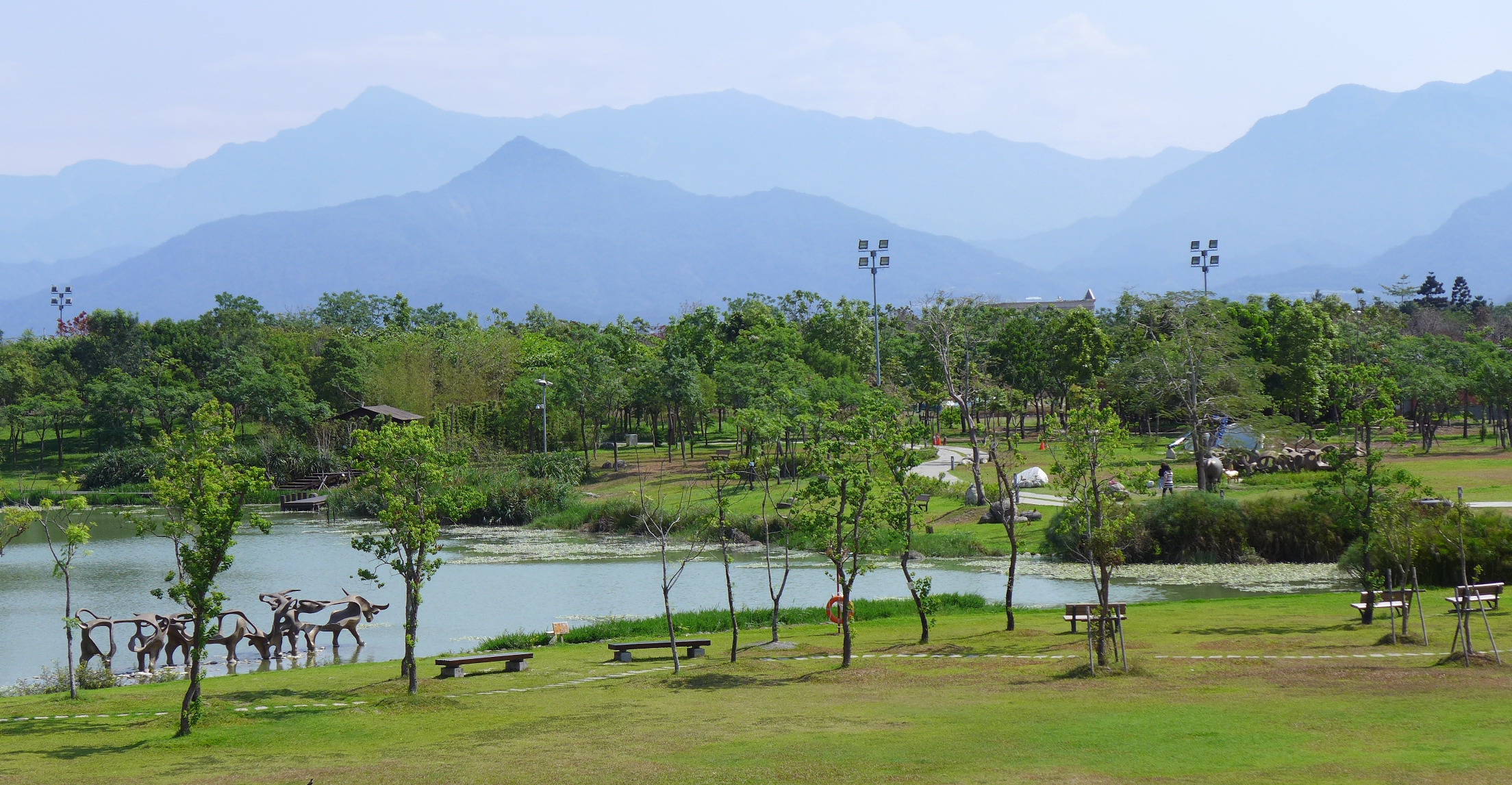
Public works of art《Migration‧Reclamation‧Plowing‧Reading》
Daily practice of Hakka spirit‧Plowing and reading cultural soul interpreted in aesthetic form
Hakka farmers crossed the dark waters (Taiwan Straits) and arrived at the southern end of Chianan Plain rather late. Therefore, they could only settle down at the alluvial plain at the foot of the Tawu Mountain. That is when forebears of Hakka people started to reclaim the Liudui region.
To get a feel for this historic trajectory, the artists first interviewed a number of renowned seniors and cultural workers in the Hakka villages and visited the historic Bagong Temple. After gaining in-depth understanding of the core Hakka settlement culture, they decided to create three sets of public-art works under four imageries, namely “Migration, Reclamation, Plowing and Reading.”
Erected inside the vast natural grassland of the Liudui Hakka Cultural Park, the public-arts works are adjacent to the ecological pond, across which is the Umbrella Hakka Cluster Architecture Area. On the rear of grassland are two mounds in the shape of right and left arms in between which the axis of Tawu Mountain runs through. The whole configuration looks like a semi round garden with round arches in front of the Bagong Temple.
Situated beside a pond and at the foot of a mountain, these three sets of public-art works intend to show how sincerely Hakka people respect heaven and earth and how rich the Hakka culture and historical context is. Besides appreciating the dynamic force of public-art works, the viewers will be enlightened by traditional Hakka spirit to reflect the relationships between man, nature, environment and themselves.

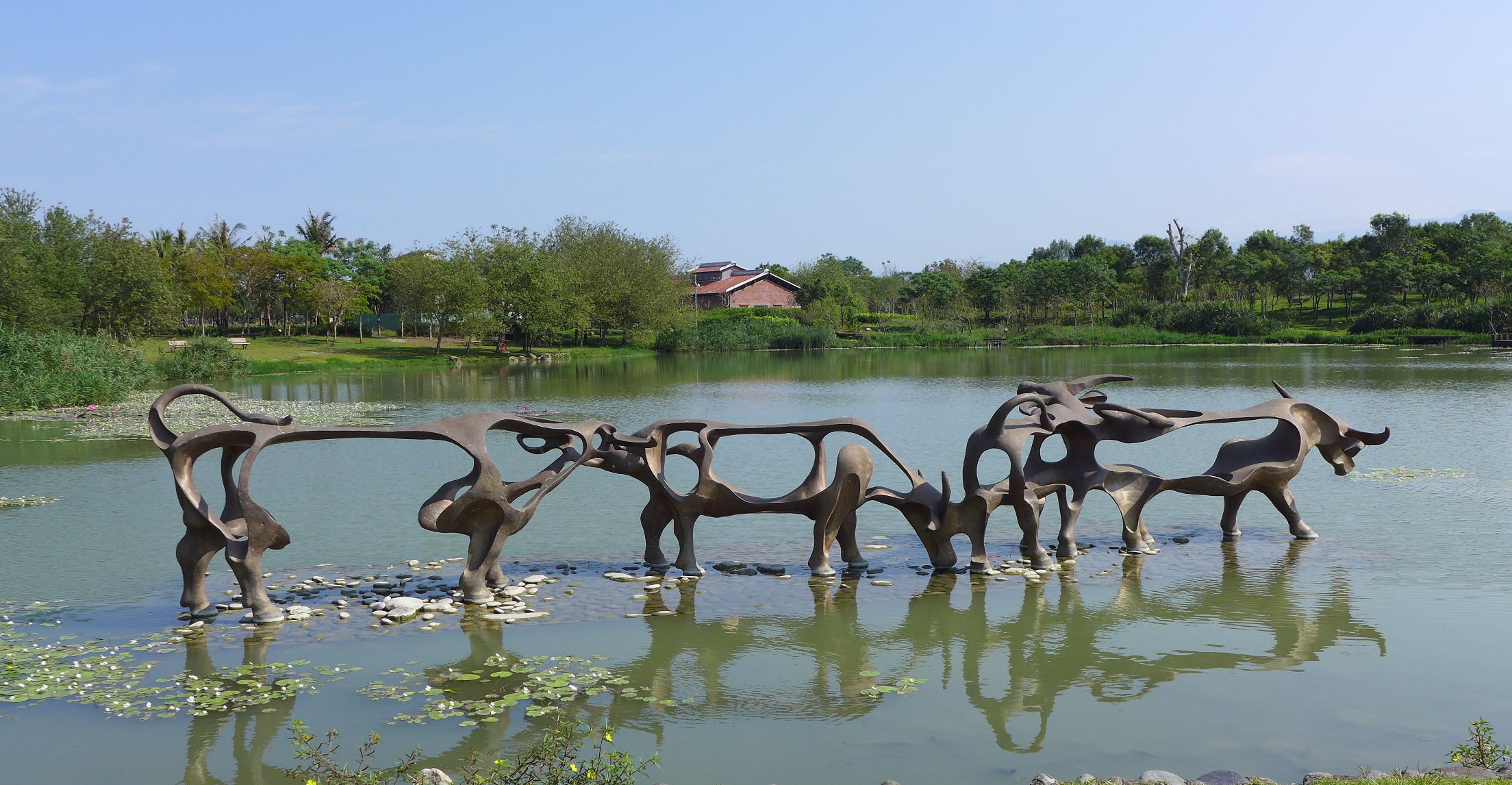
Migration Length 1150cm × Width 200cm × Height 180cm; Cast Copper, Stone 2012
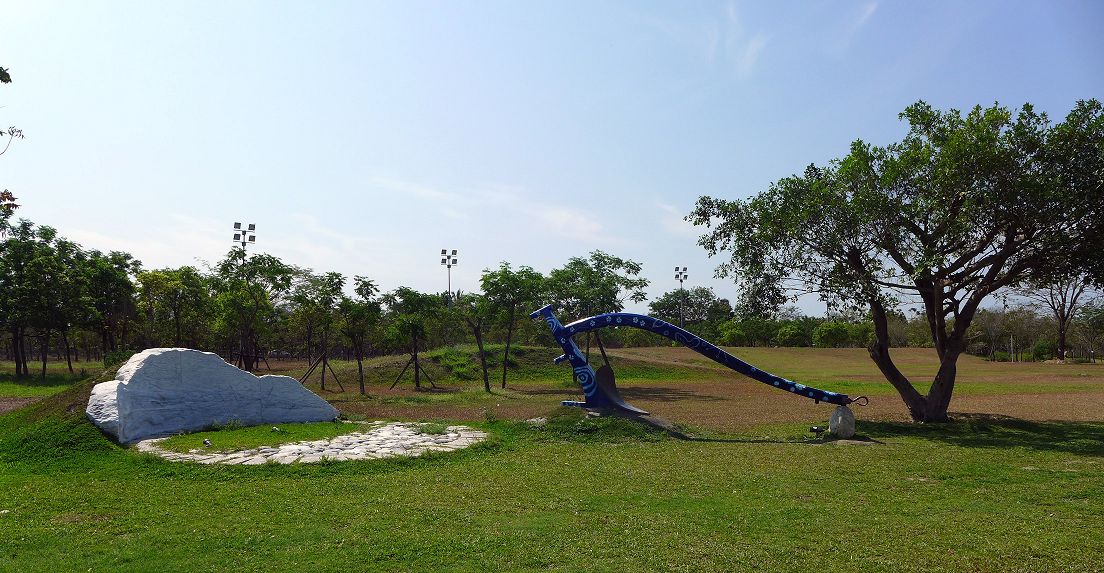
Reclamation Length 900cm × Width 600cm × Height 140cm; Stone 2012
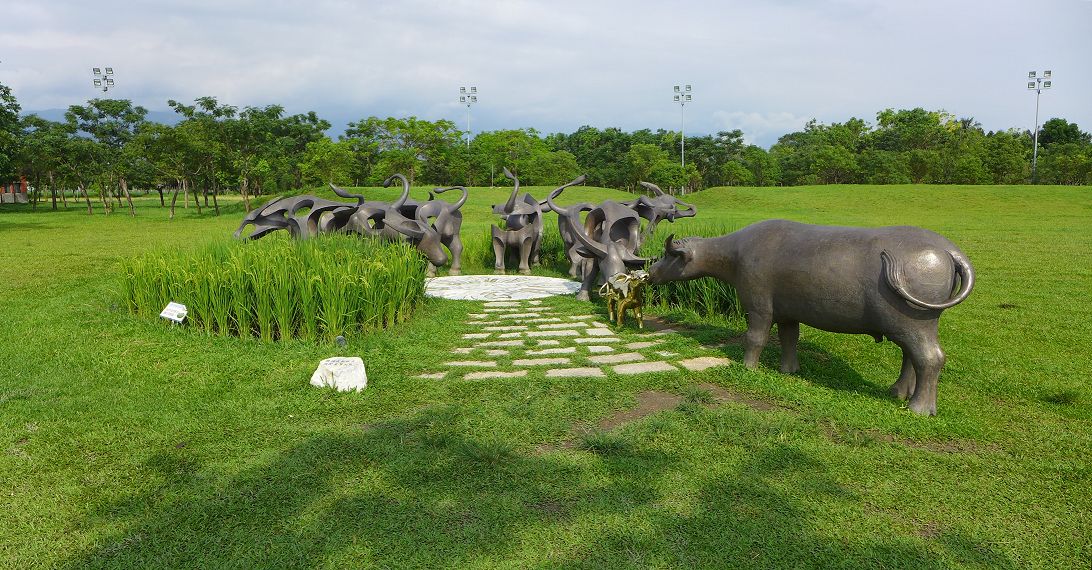
Plowing Length 620cm × Width 80cm × Height 200cm; Cast Copper, Paint, Stone 2012
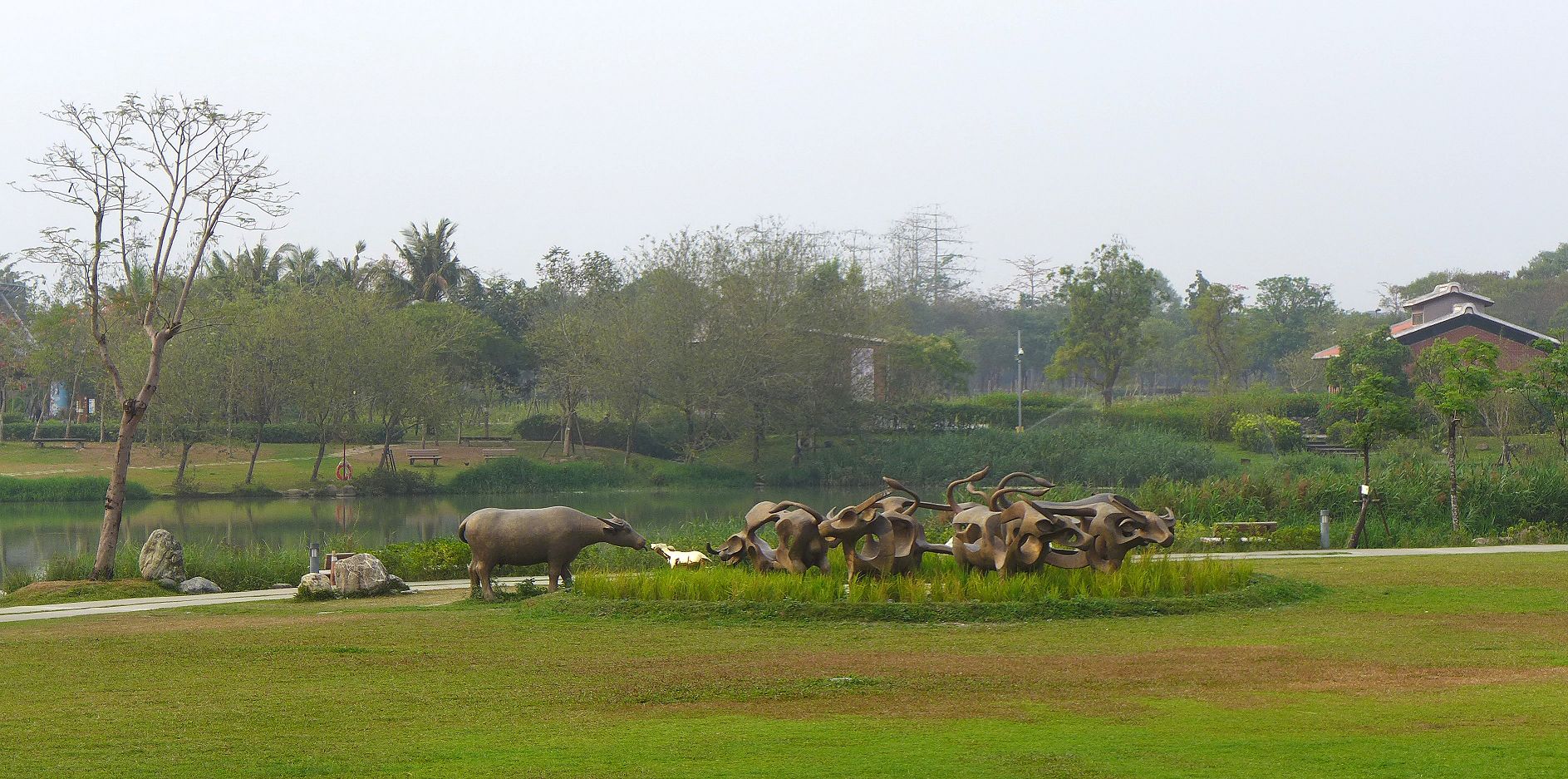
Reading Length 750cm × Width 750cm × Height 190cm; Cast Copper, Stone 2012
